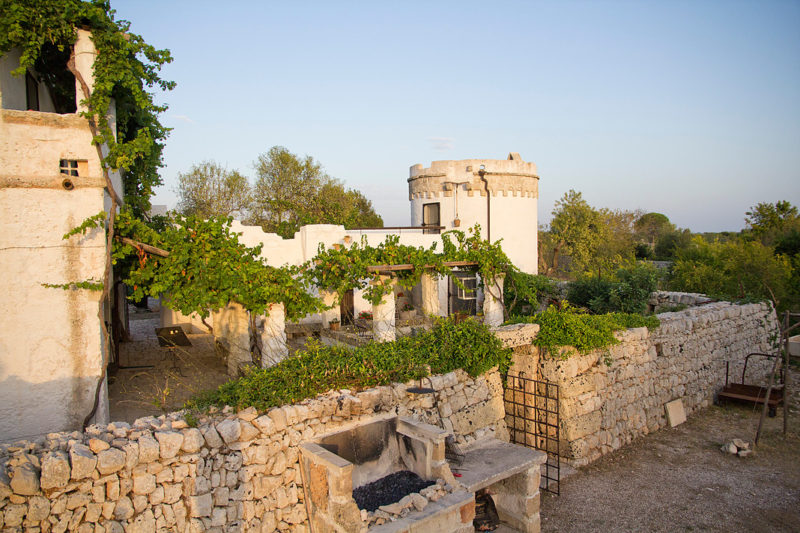
Santu Lasi Farm
This post is also available in:
 Italiano (Italian)
Italiano (Italian)
This farm stands on the highest point of the easternmost offshoot of Salento (334 ft above sea level); it can be actually found between the Ionian coast and the town of Salve.
The local vegetation is made of almond trees, barbary figs, pomegranates and aromatic plants. The main avenue runs parallel to an old millstone which still houses the remains of an old apiary.
After crossing the first enclosure, visitors can reach the courtyard overlooked by the actual huge farm – the “masseria”. The building, made of tuff and stone, was probably built in the XVI century and later annexed to XVIII century structures; it has two floors with stone drains at each entrance.
The lower floor was originally intended for the farmer, while the upper one was the estate owner’s seasonal residence. A small cylindrical dovecote tower (dating back to 1577) also overlooks the courtyard – in the centre of the latter, there’s a raised cistern.
In the orchard, there’s a monolith; a path bordered by stones leads to a cistern which receives the water of the “chiancaro”, which is still visible in the canals dug into the rock.
The orchard houses several citrus trees, a magnificent mulberry tree “lying” on the ground, laurels, hawthorns, and azaroles. Those fruits are typical of most of the farm gardens in this area and are currently affected by genetic erosion throughout the Apulian territory.
Text and photo source: https://www.villegiardinidipuglia.it/masseria-santu-lasi
This post is also available in:
 Italiano (Italian)
Italiano (Italian)
Contatti
Salve(LE)
